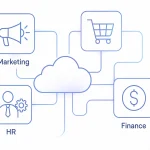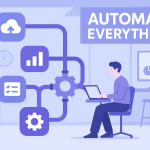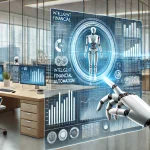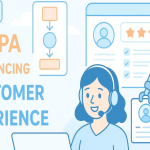Hyperautomation Explained: How Businesses Can Go Beyond RPA in 2025
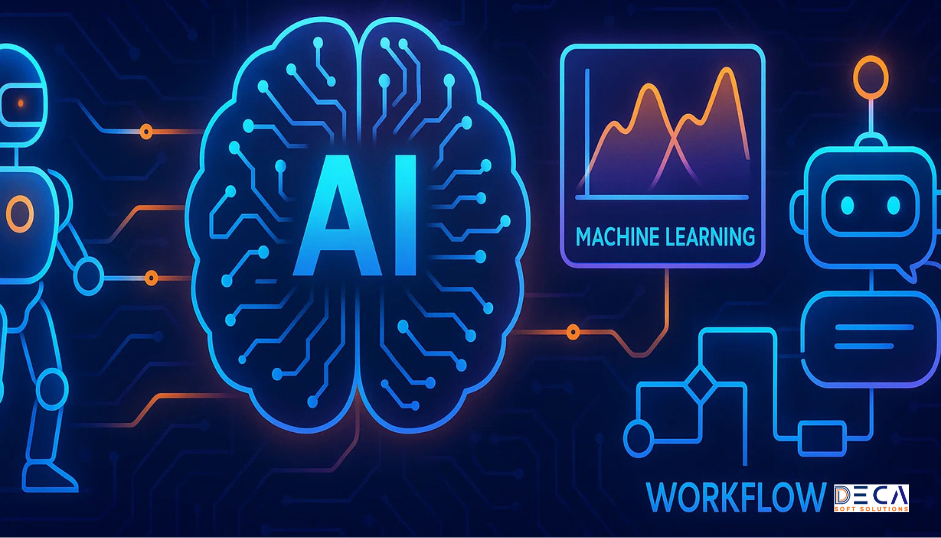
Robotic Process Automation (RPA) has already proven its value to businesses worldwide. By automating repetitive, rules-based tasks, organizations have achieved significant cost savings, improved accuracy, and increased efficiency. But while RPA has transformed operations, it is no longer enough to meet the complex demands of 2025.
Enter Hyperautomation—a more advanced approach that goes beyond simple task automation. Coined by Gartner, hyperautomation combines RPA with emerging technologies such as Artificial Intelligence (AI), Machine Learning (ML), Natural Language Processing (NLP), process mining, and advanced integration platforms. The goal is simple yet powerful: to automate not just tasks, but entire workflows and even decision-making.
As businesses strive to remain competitive in the digital-first era, hyperautomation is emerging as a game-changer. In this blog, we’ll break down what hyperautomation is, how it differs from RPA, the key technologies behind it, its benefits, real-world use cases, and a step-by-step guide for adopting it in 2025.
What is Hyperautomation?
Hyperautomation is the strategic approach to automating end-to-end business processes by integrating multiple technologies. While RPA focuses on mimicking human actions in repetitive tasks, hyperautomation brings intelligence and adaptability into automation.
According to Gartner, hyperautomation involves the use of advanced technologies like AI, ML, process mining, and analytics to expand automation capabilities beyond individual tasks.
In simple terms:
- RPA = Task automation.
- Hyperautomation = Process + Intelligence automation.
Hyperautomation allows businesses to:
- Discover processes that can be automated.
- Automate workflows across departments and systems.
- Analyze and improve automation outcomes continuously.
Difference Between RPA and Hyperautomation
| Feature | RPA | Hyperautomation |
|---|---|---|
| Scope | Task-level automation | End-to-end process automation |
| Intelligence | Rule-based, no decision-making | AI-driven, decision-capable |
| Technology | Standalone bots | RPA + AI + ML + NLP + Process Mining |
| Scalability | Department-level | Enterprise-wide |
| Use Cases | Data entry, invoice processing | Customer journeys, predictive analytics, full workflows |
| Outcome | Efficiency gains | Transformation + innovation |
RPA is often the starting point, while hyperautomation represents the future of automation maturity.
Key Technologies Powering Hyperautomation
- Robotic Process Automation (RPA): Automates repetitive, rules-based tasks like form-filling, report generation, and data migration.
- Artificial Intelligence (AI) & Machine Learning (ML): Adds intelligence by recognizing patterns, predicting outcomes, and improving over time.
- Natural Language Processing (NLP): Enables bots to understand and process human language—emails, chat messages, and voice commands.
- Process Mining & Task Mining: Identifies processes worth automating and uncovers inefficiencies.
- Integration Platforms (iPaaS): Tools like Workato, Zapier, n8n, and Make connect multiple systems and applications.
- Chatbots & Conversational AI: Provide human-like interactions while bots handle backend tasks.
Together, these technologies create a digital ecosystem where processes run seamlessly with minimal human intervention.
Benefits of Hyperautomation
- Increased Efficiency
Automates entire workflows, reducing manual handoffs and bottlenecks. - Smarter Decision-Making
AI-driven bots analyze data, detect trends, and make recommendations. - Enhanced Customer Experience
Faster response times, personalized interactions, and error-free services. - Cost Savings & Scalability
Lower operational costs and ability to scale automation enterprise-wide. - Improved Compliance & Risk Management
Automated audit trails, error reduction, and better regulatory compliance.
Use Cases of Hyperautomation in 2025
Finance & Accounting
- Automated invoice processing combined with fraud detection algorithms.
- Real-time financial forecasting using ML.
Human Resources (HR)
- Employee onboarding with RPA + AI-driven sentiment analysis of feedback.
- Automated payroll with compliance checks.
Customer Service
- Chatbots integrated with RPA for end-to-end query resolution.
- Automated escalation to human agents only when necessary.
Healthcare
- Patient onboarding, appointment scheduling, and insurance verification.
- Predictive analytics for patient care and diagnostics.
Retail & E-commerce
- Automated order processing and returns management.
- Personalized product recommendations based on AI insights.
These examples show how hyperautomation transforms industries by connecting isolated automations into intelligent, seamless ecosystems.
Challenges of Hyperautomation
While hyperautomation offers significant advantages, it’s not without hurdles:
- Complexity – Integrating multiple technologies requires expertise and planning.
- High Initial Investment – Advanced tools and infrastructure can be costly.
- Data Privacy Concerns – Handling sensitive information with AI requires compliance.
- Change Management – Employees may resist adopting new workflows.
Steps to Adopt Hyperautomation in Your Business
- Assess Current Processes
- Use process mining to identify automation opportunities.
- Build a Business Case
- Demonstrate ROI by showcasing efficiency, cost savings, and compliance benefits.
- Select the Right Tools & Platforms
- Choose platforms that integrate RPA with AI, ML, and process mining.
- Start Small and Scale
- Begin with one department or workflow, then expand enterprise-wide.
- Establish Governance & Security
- Define automation policies, track bot activities, and maintain audit trails.
- Train and Upskill Employees
- Encourage adoption by showing how hyperautomation helps employees focus on strategic tasks.
Future of Hyperautomation in 2025 & Beyond
Hyperautomation is moving businesses toward the concept of autonomous enterprises—organizations that run with minimal human intervention.
Trends shaping the future:
- AI-Native Automation: AI integrated directly into workflows, making bots more adaptive.
- Prebuilt Industry-Specific Automations: Ready-made solutions for healthcare, banking, logistics, etc.
- Hyperautomation + IoT: Intelligent automation of physical devices in industries like manufacturing.
- Greater Focus on Compliance: Automated governance frameworks to meet evolving regulations.
Businesses that adopt hyperautomation today will gain a competitive edge tomorrow.
Conclusion
RPA laid the foundation for automation, but hyperautomation represents the future. By combining RPA with AI, ML, NLP, process mining, and integration platforms, businesses can automate not just tasks—but entire workflows and intelligent decision-making.
While challenges such as complexity, cost, and change management exist, the benefits of hyperautomation far outweigh the risks. From finance and HR to healthcare and retail, businesses across industries are already realizing its potential.
At DecaSoft Solutions, we help organizations go beyond RPA and embrace hyperautomation. Our experts guide you through process discovery, tool selection, integration, and scaling to ensure automation delivers measurable business impact.
👉 Ready to future-proof your business? Contact DecaSoft Solutions today to explore how hyperautomation can transform your operations.
